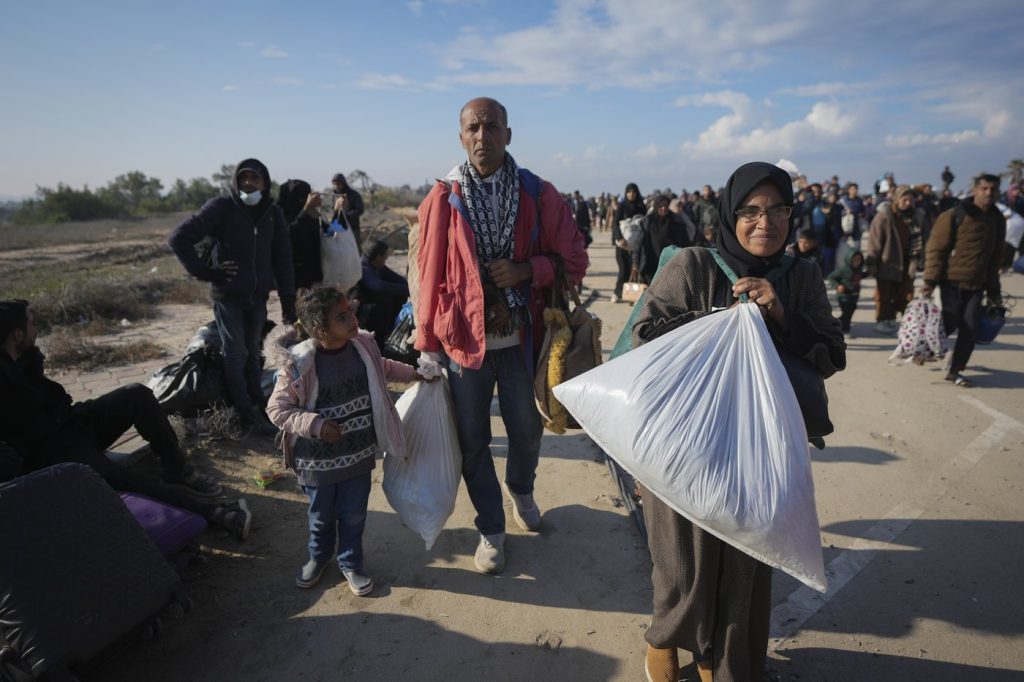BEIT LAHIYA, Gaza Strip (AP) After enduring 15 months of warfare, the Abu Jarad family made a poignant return to their home in Beit Lahiya. Ne'man Abu Jarad, his wife Majida, and their three daughters were overwhelmed with emotion as they prayed upon seeing their damaged house. The once vibrant grove of orange, olive, and palm trees, along with the fragrant flowers they cherished, had been bulldozed away, but their home still stood as a hollow shell.
Having been displaced multiple times due to Israel's extensive military actions against Hamas, this family experienced profound hardship. They were among the 1.8 million Palestinians forced from their homes following the October 7, 2023 attack by Hamas, which initiated a massive retaliatory response from Israel. The Abu Jarads fled their house in northern Gaza shortly after bombardments began, eventually moving seven times and reaching the southern city of Rafah. By October 2024, they were residing in a sprawling tent camp near Khan Younis, living with despair and little hope of returning home.
However, a ceasefire between Israel and Hamas, announced in January, brought renewed hope for the Abu Jarad family. On January 19, the truce implemented new changes, allowing them to prepare for their return. By January 27, they joined thousands of others making their way back to northern Gaza, a journey fraught with difficulty and exhaustion. Ne'man carried multiple bags as they walked approximately 8 kilometers (5 miles) along the coastal road, often stopping to rest.
Upon reaching the outskirts of Gaza City, they encountered the devastation inflicted by the long-standing conflict. Streets were cluttered with rubble, and buildings stood as mere remnants of what they once were. The family marveled at the extent of the destruction as they passed through Beit Lahiya and Beit Hanoun, areas that had suffered particularly severe assaults.
As the sun set, they arrived at their neighborhood, and their daughters were left speechless by the sight of their surroundings, which included a landscape of wreckage. The long trek culminated in an emotional reunion with their home, which survived the war but was significantly damaged. Ne'man and Majida reflected on the joy and gratitude of returning to where they had built their lives, even amid the overwhelming losses that surrounded them.
Despite the joy of returning, Ne'man recognized the challenges they faced. Adjoining his home was his brother's three-story house, now reduced to rubble due to an airstrike. While Ne'man expressed his determination to repair his home, he also conveyed the deep grief he felt for lost family members and neighbors. Access to basic necessities like water remained a struggle, requiring them to walk kilometers to find supplies, a reminder of their painful existence in displacement camps.
Returning home does not erase the suffering they endured, and life will remain fraught with challenges even as they seek to rebuild amidst the ruins left by war. The hope of the Abu Jarad family, however, shines through as they navigate their new reality in their beloved but damaged hometown of Beit Lahiya.










